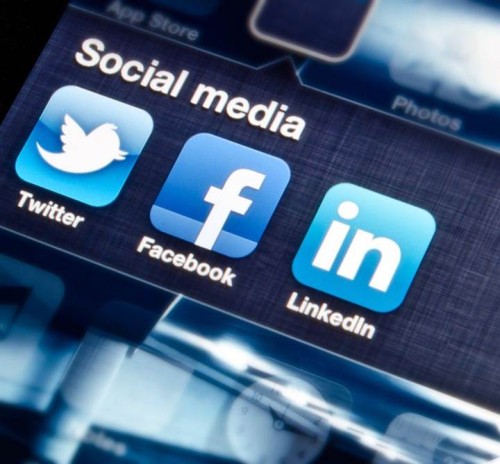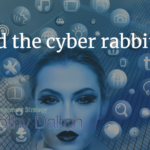LinkedIn is not Facebook… right? But when I look at the two platforms what I see is a blur of blue, off white and similar functionality.
As a head hunter LinkedIn has become part of my daily routine. I use it in every operational and many strategic elements of my businesses. I value the content of trusted contacts and “influencers” and use it as a tool for staying in touch with people as well as issues and trends in my field. Even when the Pulse function opened up and became not so much a pulse, but a palpitation of unregulated content, I was able to triage key information.
I am not alone
I thought it was just me – but seemingly not. I saw just a very fleeting comment pass through my feed, that suggested that exact same message from someone else. I did try to track that person down, for it but couldn’t find him or her. Neither of us, it would seem, want to look at photos of people’s lunches and images with sometimes pithy quotes (sometimes not so pithy), on a professional platform.
The new LinkedIn layout and interface for me has morphed into a Facebook look-alike and left me as a consumer, brand confused. The white noise of unregulated content increases incrementally on a weekly basis, which is becoming a source of irritation by a similar increment.
So as these two platforms take each other on, in both a professional and personal context, the world’s biggest social networking platforms seem to be leaving the the consumer dazed and confused, with an acute lack of product differentiation.
Facebook at work
Facebook is orchestrating a foray into the world of professional networking and workplace connecting, with the proposed launch of the Facebook at Work currently only available to people who have an account through their employer. LinkedIn has responded by upping the ante, to offer similar features to Facebook on its own platform.
LinkedIn has the had the lion’s share of the professional networking market and established itself as the primary global data base to connect employers and recruiters with job seekers. The new interface seems designed to encourage an even higher level of user-generated content with the possibility to add posts, updates and photos.
There are now also short cuts to “staying in touch” with network connections with “like” buttons very much in Facebook style. We can also take advantage of lists of statistics to generate user activity alerts of how our profile positioning has gone up and down.
LinkedIn, in the early days, was a platform to post your C.V. and create a professional presence usually associated with people who were on the market for a job. But now it seems to be targeting those who aren’t job seekers. The aim of the new look, in theory, is apparently to encourage more interaction and conversations by people in employment, which in turn will generate traffic and therefore revenue for LinkedIn.
Brand differentiation
For one person at least (me!) it’s having the reverse effect. I find it mildly annoying to have to tune out much of the white and mindless noise that has followed this development. In my network out of 14 updates posted in one hour on a Sunday, three were images: one a piece of jewellery, the others were photos with the “wise” words of so-called philosophers and thinkers which we can see anywhere else especially on Facebook and Twitter. On Monday morning, an increase in traffic saw four out of 18 update were images, with an identical breakdown. I have even had car adverts, a posting for a cleaner/housekeeper and baby pictures. If I see one more quote about Uber, AirBnb and TaskRabbit not producing anything, I will get on my desk and scream!
I am now seeing LinkedIn Pulse articles displaying just a hyperlink to a web site post, reminiscent of Twitter functionality and culture.
Interestingly, all three platforms have similar shades of blue as their brand colour, which only adds to the brand blurring.
Is it just me? Anyone else feel the same?






Great post Dorothy! You are not alone for sure. For what it is worth, I think that this relentless dumbing down of the platform is inevitable in the pursuit of shareholder returns. This trumps user experience especially when as now the shareprice isn’t doing anything spectacular…but is it sacrificing sustainable value for short term returns???
Anyway I have chosen in the light of this development to remove myself more or less from the LinkedIn ‘junkstream’ 😉
Neil
Neil – glad to hear I’m not a lone voice. Like the phrase “junkstream”
I see things a little differently. As long as the content is work related, I don’t mind about the quality. I can choose to disconnect (‘remove connection’) from people who spam my feed with trash and so, ultimately, I am still in control of the quality of the content.
Hi Dave – I think that’s my point, the content isn’t work related. I am delighted someone has had a baby, or is moved by a quotation of a philosopher or thought leader. I have no problem with that. But please put that content on Twitter or Facebook!
Of users are not self regulating and LinkedIn doesn’t step up with editorial control, then perhaps your disconnect route is the way.
Perhaps I am a lone voice in all of this! Time will tell!
Hi Dorothy
Agreed. LinkedIn for work, Facebook for social. Twitter for both (nearly all the thought leaders I respect, share their content via Twitter).
Would you agree that a big part of the self-regulation problem is that these platforms are moving so quickly that there’s not enough time for ‘norms’ to be established that guide what is and isn’t acceptable behaviour/content.
Hi Dave – it’s not that anyone is behaving inappropriately but my stream is flooded with identically styled content to Twitter and FB. I previously relied on LinkedIn for high level business content. Without LinkedIn Signal to carry out a triage the problem is exacerbated. At least with Twitter we can use Tweetdeck or HootSuite to manage. It just feels dumbed down and I use it less as a reference base.
Spot on Dorothy
Sometimes these days I log on to LinkedIn and think I’m on Facebook. At a certain level I believe in leaving people to interact in the way that they see fit. Indeed the new LinkedIn layout encourages these.
On the other hand, I am quite concerned that the current unprofessionalism on the site may serve to drive away some of the people that I’d really like to interact with.
Pingback: Dealing with over sharing in a T.M.I. culture - 3Plus International